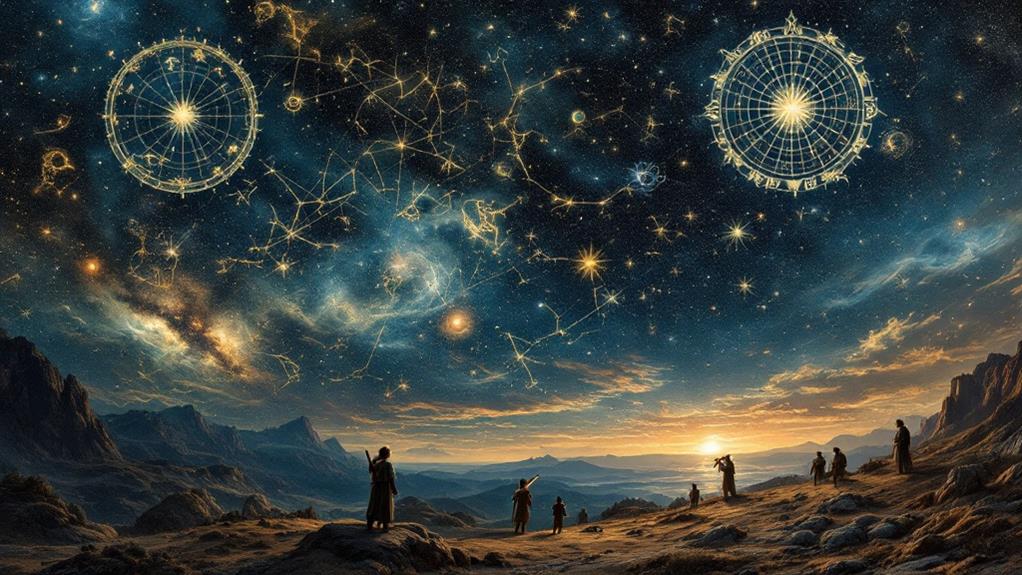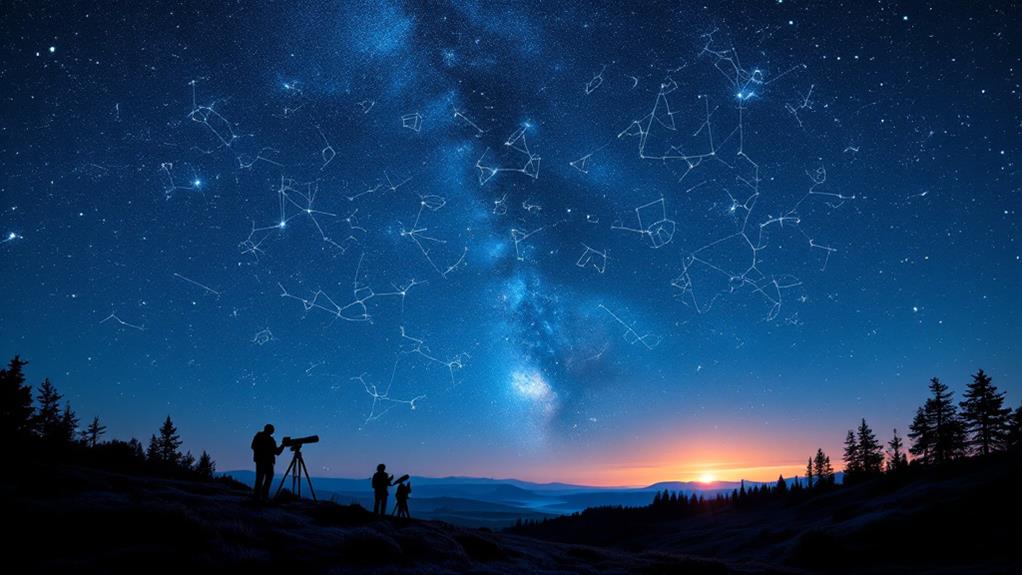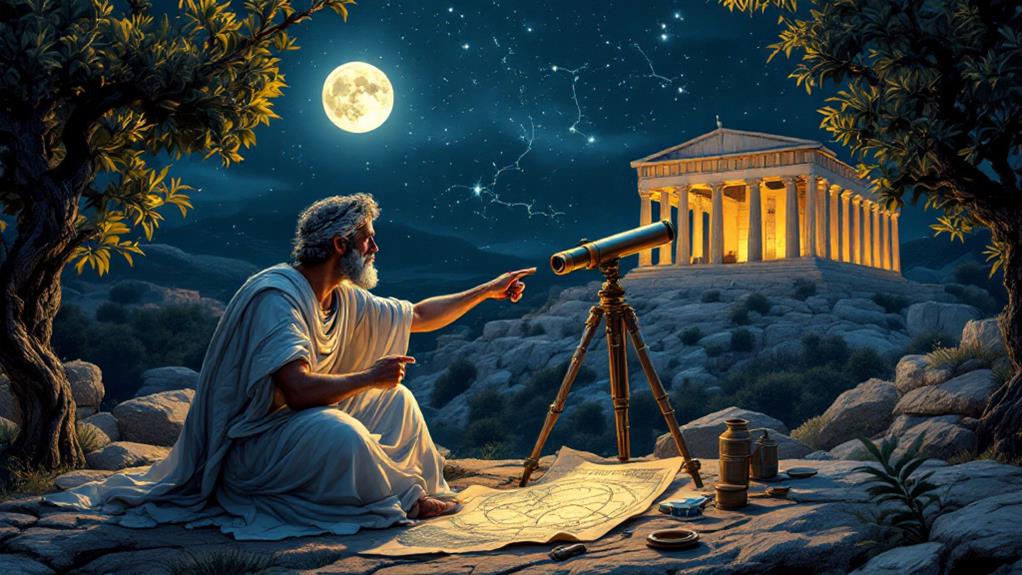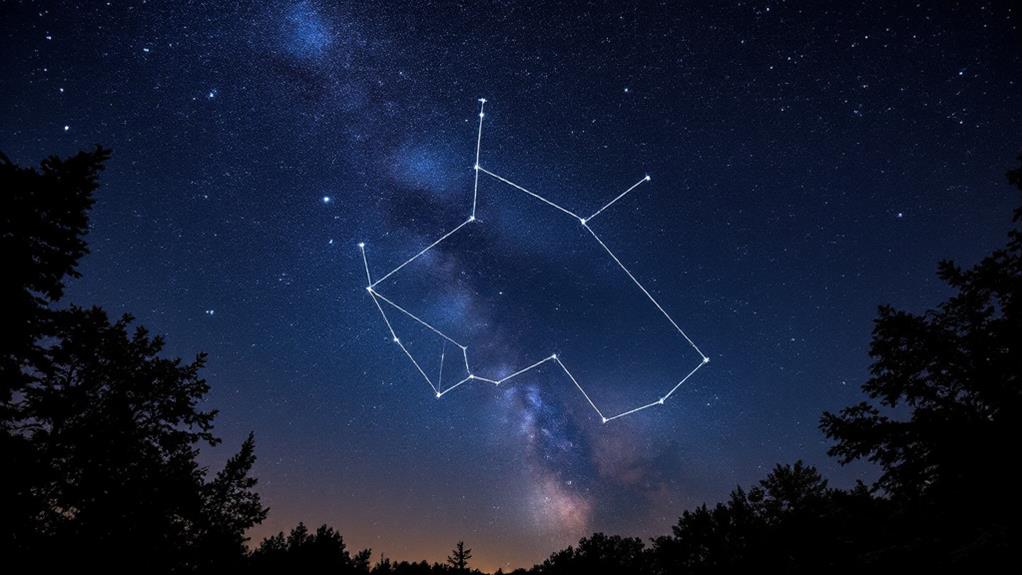When Was the Constellation Hydra Discovered?
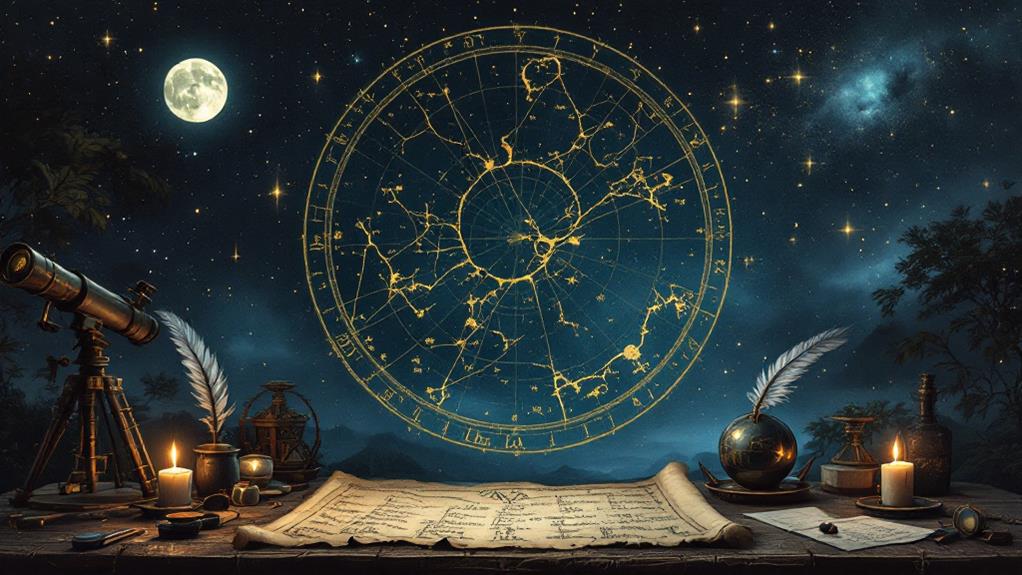
You can't pinpoint an exact discovery date for the constellation Hydra, as it's been recognized by various cultures throughout history. Ancient Babylonians included it in their star charts, while Egyptians associated it with their sky deities. Greeks and Romans further developed its mythology and celestial mapping. Islamic astronomers refined its documentation, with Al-Sufi providing detailed observations in his "Book of Fixed Stars." During the Renaissance, astronomers systematically cataloged Hydra, solidifying its place in the night sky. The constellation's rich history spans millennia, reflecting humanity's enduring fascination with the celestial domain. Exploring Hydra's expedition through time reveals fascinating glimpses into ancient astronomy and cultural beliefs.
Ancient Babylonian Star Charts
Ancient clay tablets, etched with intricate star maps, hold the key to understanding Babylonian astronomy. As you examine these artifacts, you'll find that Babylonian star charts are among the earliest known celestial records. They're not just maps; they're windows into an ancient civilization's understanding of the cosmos.
You'll notice that these charts focus heavily on the ecliptic, the apparent path of the Sun across the sky. The Babylonians divided this path into 12 sections, each associated with a constellation. This system laid the foundation for the zodiac we are familiar with today.
When you look closer, you'll see that ancient Mesopotamian constellations differ from our modern ones. The Babylonians recognized many of the same star patterns, but they interpreted them differently. Their sky was populated with mythical creatures and gods, reflecting their rich cultural beliefs.
Babylonian zodiacal symbolism played an indispensable role in their astronomy and astrology. You'll find that each constellation carried significant meaning, often tied to religious or agricultural practices. This intricate system of celestial observation and interpretation formed the basis for much of Western astronomy, including the identification of constellations like Hydra.
Egyptian Celestial Mythology
As you traverse into Egyptian celestial mythology, you'll find a rich fabric of gods and goddesses interwoven with the stars. The ancient Egyptians viewed the night sky as a divine domain, populated by powerful deities who influenced earthly affairs. Egyptian sky deities played crucial roles in their cosmology, with figures like Nut, the sky goddess, and Ra, the sun god, taking center stage.
You'll uncover that the Egyptians associated various constellations with their gods and mythical creatures. While Hydra wasn't explicitly named in their records, celestial crocodile symbolism was prevalent. The constellation we now call Hydra might have been linked to their crocodile deity, Sobek. The Large and Small Magellanic Clouds were also prominent objects in the southern hemisphere, appearing to the naked eye as detached parts of the Milky Way.
The sky goddess Nut swallowing the sun each night, the daily journey of Ra across the sky in his solar boat, the star Sirius associated with Isis and the flooding of the Nile, and constellations representing deities like Osiris, Orion, and Taweret are four key aspects of Egyptian celestial mythology.
Egyptian astronomers meticulously observed celestial bodies, using them for timekeeping, religious ceremonies, and agricultural planning. Their cosmic understanding deeply influenced their culture, architecture, and daily life, leaving an indelible mark on human history.
Greek Astronomical Contributions

Greek stargazers made pioneering contributions to astronomy, laying the foundation for modern celestial understanding. You'll find that their work in celestial mapping was particularly significant. They meticulously observed and recorded the positions of stars and planets, creating detailed star catalogs that would be used for centuries.
One of their most notable achievements was the development of the zodiac, a band of constellations along the ecliptic. This system not only aided in tracking the sun's apparent path but also became vital for celestial navigation. Greek astronomers like Hipparchus and Ptolemy refined these observations, introducing mathematical models to predict celestial movements.
You'll appreciate how the Greeks also contributed to constellation identification and naming. Many of the 88 modern constellations, including Hydra, have roots in Greek mythology and astronomical tradition. They developed a systematic approach to grouping stars, which greatly influenced subsequent astronomical work.
Their methods of celestial navigation, using stars and constellations as reference points, revolutionized maritime travel and exploration. This practical application of astronomical knowledge demonstrates the far-reaching impact of Greek contributions to the field.
Roman Adoption and Expansion
Roman astronomers adopted and expanded upon Greek celestial knowledge, adapting it to their own cultural setting. They incorporated Hydra into their celestial lore, often associating it with their mythological deities. You'll find that the Romans retained much of the Greek astronomical framework while adding their own interpretations and observations.
The Romans' contribution to Hydra's history included:
- Renaming some stars within the constellation
- Expanding on its mythological significance
- Incorporating it into their astrological practices
- Using it for positioning and timekeeping
As you investigate Roman astronomy, you'll notice their blending of Greek and Mesopotamian cosmology. They maintained Hydra's serpentine form but sometimes linked it to their own serpent-related myths. Roman astronomers also refined the constellation's boundaries and cataloged additional stars within it.
You'll see that Roman texts and star charts from this period often feature Hydra prominently. Their observations and records helped preserve and transmit knowledge of this ancient constellation to future generations. The Roman adoption of Hydra guaranteed its continued importance in Western astronomy for centuries to come.
Medieval Islamic Astronomy

Building upon the Greco-Roman astronomical tradition, medieval Islamic astronomers made significant contributions to the study of Hydra and other constellations. During the Islamic Golden Age (8th to 14th centuries), you'd find astronomers refining and expanding ancient star catalogs, including detailed observations of Hydra.
Islamic scholars like Al-Sufi (903-986 CE) meticulously documented Hydra in his "Book of Fixed Stars," providing more accurate positions and magnitudes for its stars. They developed sophisticated mathematical models and computational methods to predict celestial movements, improving upon Ptolemy's work.
You'd see astronomers like Al-Battani and Al-Biruni applying trigonometry to calculate celestial positions with unprecedented accuracy. They created advanced instruments like the astrolabe and celestial globes, which helped in mapping Hydra and other constellations.
Islamic astronomers also contributed to the naming of stars. For instance, the star Alphard in Hydra, meaning "the solitary one" in Arabic, was cataloged during this period. Their work laid the foundation for future astronomical advancements and preserved critical knowledge about Hydra and other constellations for generations to come.
Renaissance Star Catalogs
As you examine the Renaissance period, you'll find a renewed interest in celestial mapping and star catalogs. This era saw astronomers building upon ancient knowledge and Islamic contributions to create more thorough and precise star charts. They began to systematically document constellations, including Hydra, with greater accuracy.
Renaissance astronomers didn't just focus on recording star positions; they also investigated the mythological origins of constellations and analyzed stellar brightness patterns. These catalogs often included:
- Detailed star positions
- Magnitude estimates
- Constellation boundaries
- Historical and mythological notes
You'll notice that during this time, Hydra's place in the night sky became more firmly established. Astronomers like Tycho Brahe and Johannes Hevelius produced influential star catalogs that included Hydra, helping to standardize its representation. Their work laid the foundation for modern celestial cartography and our understanding of constellations like Hydra.
As you study these Renaissance star catalogs, you'll see how they bridged the gap between ancient celestial knowledge and the scientific revolution that followed, setting the stage for our current understanding of the night sky.
Modern Constellation Standardization
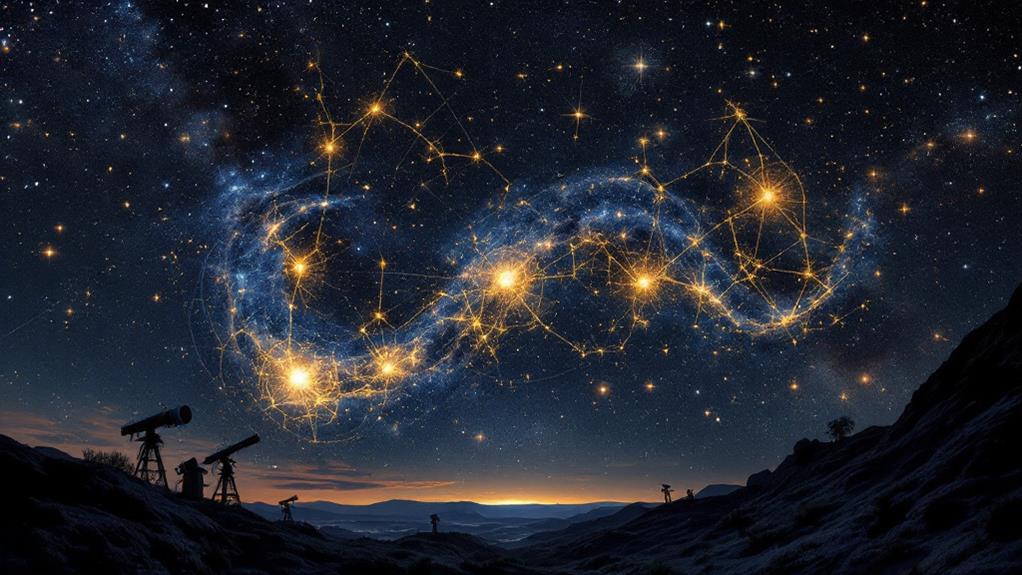
The turn of the 20th century marked a vital moment for constellation standardization. As astronomy advanced, the need for a unified system to classify stellar patterns became apparent. In 1922, the International Astronomical Union (IAU) took on this task, aiming to streamline the sky's ancient mythology into a scientific structure.
You'll find that the IAU's efforts resulted in the official recognition of 88 constellations, including Hydra. This standardization process involved carefully defining constellation boundaries, ensuring no overlap between regions. The IAU drew imaginary lines in the sky, creating a celestial map that astronomers worldwide could reference.
While preserving many traditional stellar patterns, the IAU's work also meant some lesser-known constellations were discarded. This modernization balanced respect for cultural sky mythology with the demands of scientific precision. As a result, you can now confidently identify Hydra and other constellations using universally accepted guidelines.
This standardization has proven essential for astronomical research, space exploration, and public education. It's allowed for consistent star charts, improved communication among astronomers, and a clearer understanding of our night sky's organization.
Frequently Asked Questions
What Is the Brightest Star in the Constellation Hydra?
You'll find the brightest star in Hydra is Alphard, also known as Alpha Hydrae. This orange giant shines with a distinctive reddish hue. When comparing star brightness, Alphard stands out with a magnitude of 2.0, making it easily visible to the naked eye. Its properties include a surface temperature of about 4,000 K and a radius 50 times that of our Sun. Despite being Hydra's brightest, Alphard isn't among the brightest stars in the night sky overall.
How Many Stars Make up the Main Shape of Hydra?
You'll find that Hydra's constellation shape is remarkably long and winding, resembling its namesake serpent. While the star density in Hydra is relatively low, it's composed of about 17 main stars that form its primary outline. However, you'll notice that the exact number can vary depending on how you interpret the constellation's shape. Despite its size, Hydra's stars aren't particularly bright, making it a bit challenging to spot in the night sky.
Is There a Mythology Associated With the Hydra Constellation?
You'll find rich mythological origins associated with the Hydra constellation. It's often linked to the multi-headed serpent slain by Hercules in Greek mythology. This celestial symbolism represents the monster's immortality, as it was said to regrow two heads for each one cut off. You'll see this reflected in the constellation's sprawling shape across the sky. The Hydra's mythological connections add depth to its astronomical significance, making it a fascinating subject for stargazers and mythology enthusiasts alike.
Can Hydra Be Seen From Both Hemispheres of Earth?
You can spot Hydra from both hemispheres of Earth, making it a truly global constellation. As the largest of the 88 modern constellations, it stretches across a vast portion of the sky. However, you'll notice seasonal visibility changes depending on your location. In the Northern Hemisphere, you'll see it best during spring evenings, while Southern Hemisphere observers get a great view during autumn nights. Its extensive size guarantees at least part of Hydra is visible year-round.
Are There Any Notable Deep-Sky Objects Within the Hydra Constellation?
You'll find several fascinating deep-sky objects within Hydra. The constellation boasts impressive globular clusters, including M68 and NGC 5694. You can also spot intriguing planetary nebulae, such as the Ghost of Jupiter (NGC 3242) and the Southern Owl Nebula (NGC 3587). Don't miss the spiral galaxy M83, known as the Southern Pinwheel. With a telescope, you'll uncover these celestial wonders and more, making Hydra a goldmine for amateur astronomers and stargazers alike.

